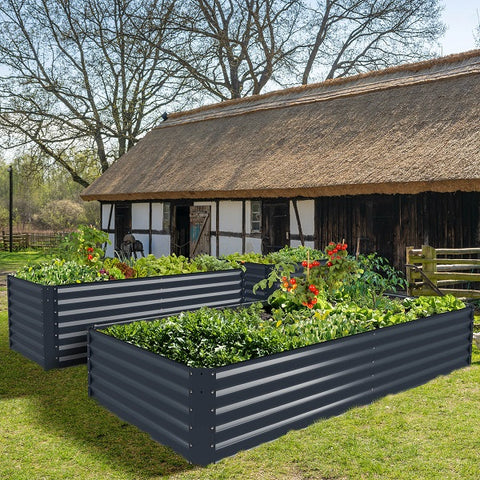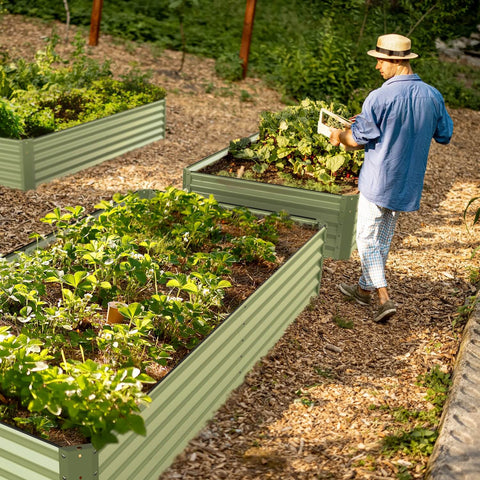Winter passed and spring came. Are you ready for spring ploughing? A garden bed is a good choice.The following content also has some reference value for raised garden beds.
I like to plant in my garden bed. When you do raised bed gardening, you can easily control the soil type. Your bed soon warms up in spring. You will have fewer weeds, and it will be easier to remove those that do appear. The soil will not be compacted like an underground bed. But there's a downside: You have to figure out how to fill a tall garden bed. It seems daunting!

Whether you use native soil or a soil mixture, a mixture of soil and compost, or something else, we'll discuss your options. There are many things you can do to fill your garden planting bed!
What's your bed for?
Before you can start planning, you need to decide what your bed will actually be used for. After all, some plants have shallower roots than others. For example, red radishes usually need very little depth, while white radishes only need a few feet of soil.

If you have a root depth, you will grow in each container and you can customize the fill material. For example, one only needs 6-8 inches of good quality soil to have a dedicated bed of leafy greens. Soil or other materials can be used under it to prove its volume. But carrot growers need good soil at least 1.5 feet thick.
Drought-tolerant plants usually have deep root systems. These deeper roots allow plants to find the water they need at deeper depths.
You put the best soil on the surface, and whatever is underneath needs to remove excess water. Avoid using materials such as rocks at the bottom of raised river beds, as this may create artificial water levels and affect good drainage. For raised garden beds, drainage is essential.
What do organic materials consist of? A lot of things!
Dry old wood makes a suitable base layer because it breaks down under the soil. The wood also retains some moisture, allowing excess water to drain away easily.

Old branches or small logs can take years to break down, so keep that in mind. For a while, you'll want to avoid planting the deepest vegetables in a woody bed and opt for shallow-rooted plants instead.
Other garden waste can also be a good base. Grass clippings, dried leaves or leaf mold, other plant trims, and the like can fill the bottom of your bed. They quickly break down into the soil, increasing its organic content. However, as they break down, their height will decrease and you will see clear signs of falling soil water levels at the end of the season. This is still a great way to start a whole new lifting bed, as you can continue the soil building afterwards.
Hasn't your compost pile broken down yet? Throw unfinished compost under the bed. It will continue to decompose internally. You can mix some local garden soil with it if you want, but it's not necessary. These lower layers are also good places to bury roots and spread grass clippings and other garden waste over them before adding soil.
Now that your base is filled and you're ready to add planting layers, it's time to think about what you really want to plant.









